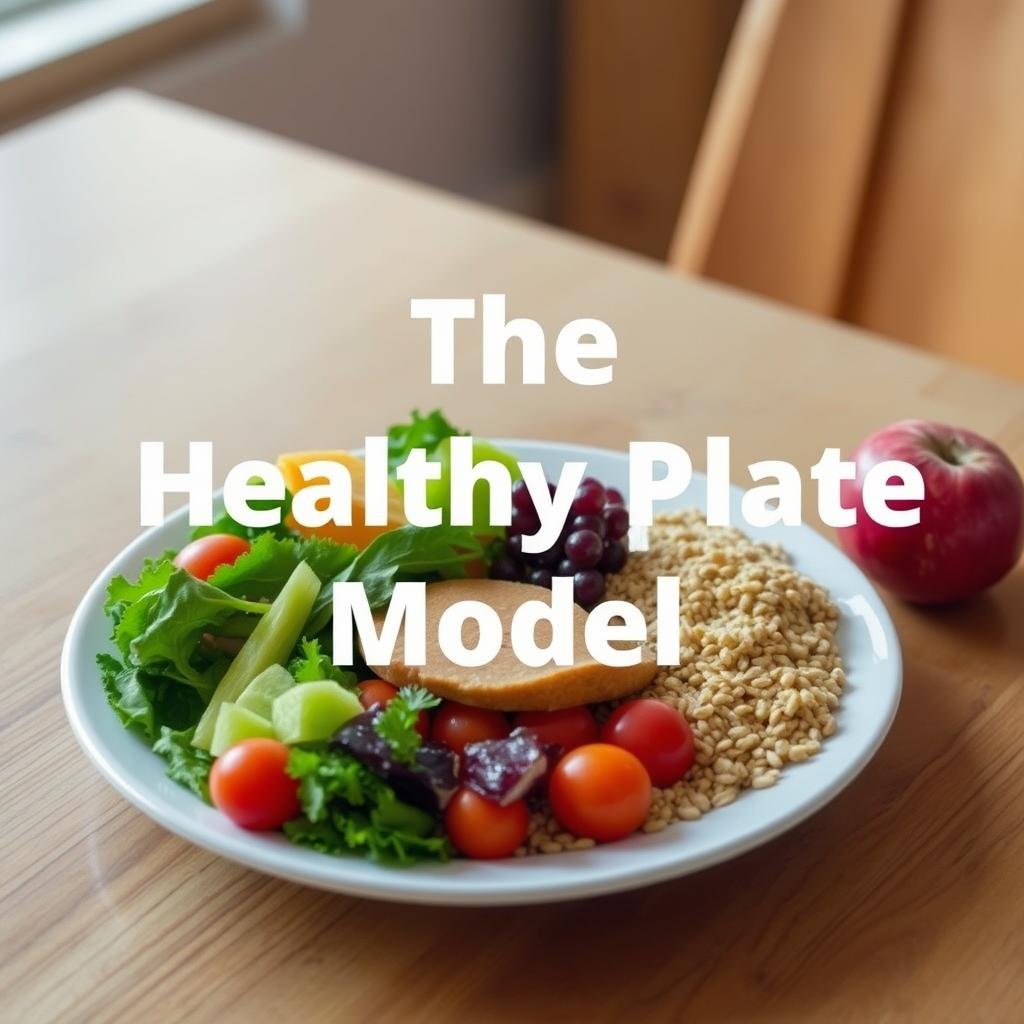Eating well is more than just filling your plate—it’s about fueling your body with the right food to feel your best. A well-rounded approach to nutrition can boost your energy, protect against chronic diseases, and keep you thriving every day.
Models like Harvard’s Healthy Eating Plate and the NHS Eatwell Guide show the way. They emphasize vegetables, whole grains, healthy proteins, and oils while limiting processed meals. These tools are your blueprint for success.
With a little intention, you can transform your eating habits. Start small, focus on vibrant plates, and enjoy the journey to better health. Ready to take the first step? Let’s make it happen!
Why a Balanced Meal Plan is Essential for Your Health
Nourishing your body with the right foods can transform your daily life and long-term health. A balanced diet isn’t just about eating—it’s about fueling your body with the nutrients it needs to thrive.
The Benefits of Eating a Balanced Diet
Eating colorful vegetables and fruits every day can reduce your risk of chronic disease. Research shows that consuming five or more portions daily lowers heart disease risk by 30%. Antioxidant-rich produce, zinc-packed proteins, and vitamin C-loaded fruits also boost immunity.
Complex carbs like quinoa and brown rice keep your energy levels steady. Omega-3s from fish and walnuts support brain health. A consistent approach to eating helps maintain a healthy weight and keeps you feeling your best.
How a Balanced Meal Plan Supports Long-Term Health
Proper macronutrient balance prevents conditions like type 2 diabetes. Including a variety of foods ensures your body gets all the essential nutrients it needs. This approach not only protects your physical health but also enhances mental clarity and emotional well-being.
Start small by adding more vegetables and fruits to your plate. Over time, these choices become habits that support a healthier, more vibrant life.
Understanding the Basics of a Balanced Meal
Understanding what fuels your body is the first step toward a healthier lifestyle. A well-rounded diet includes a mix of macronutrients and micronutrients that work together to keep you energized and thriving.

The Role of Macronutrients: Carbs, Proteins, and Fats
Macronutrients are the building blocks of your diet. Carbohydrates, like whole grains and oats, provide sustained energy throughout the day. They keep you feeling full and focused.
Proteins are essential for muscle repair and growth. Sources like chicken, tofu, and lentils are packed with lean protein. The NIH recommends 46-56 grams daily for adults.
Healthy fats, such as those found in olive oil and avocados, support heart health and brain function. Including a variety of these in your meals ensures your body gets what it needs.
Micronutrients: Vitamins and Minerals You Need
Micronutrients may be small, but their impact is huge. Vitamins like C and D boost immunity and bone health. Pairing spinach with citrus fruits enhances iron absorption.
Minerals like calcium and zinc are crucial for strong bones and a healthy immune system. Broccoli and almonds are excellent sources. Adding these to your diet ensures you’re covered.
By focusing on both macronutrients and micronutrients, you can create meals that fuel your body and mind for the long haul.
How to Create a Balanced Meal Plan: Step-by-Step Guide
Transforming your eating habits starts with a clear strategy and a little preparation. By following a few simple steps, you can design a plan that fits your lifestyle and meets your needs. Let’s break it down.
Step 1: Assess Your Nutritional Needs
Start by understanding your body’s requirements. Active adults typically need 2,000-2,500 calories daily, but this varies based on activity level. Use online tools or consult a nutritionist to calculate your ideal intake.
Consider your goals—whether it’s weight management, muscle building, or simply feeling more energized. This step ensures your plan is tailored to your unique needs.
Step 2: Choose the Right Foods for Each Meal
Focus on variety and balance. Include lean proteins like chicken or tofu, complex carbs such as quinoa, and healthy fats like avocado. Aim for colorful vegetables and fruits to maximize nutrient intake.
Batch-cooking versatile proteins can save time and simplify meal prep. For example, grilled chicken can be used in salads, wraps, or stir-fries throughout the week.
Step 3: Plan Your Meals for the Week
Organize your meals in advance to stay on track. Create a shopping list grouped by food categories to make grocery trips efficient. Design theme nights like “Meatless Monday” or “Fish Friday” to add variety.
Use Sunday afternoons for meal prep. Divide servings into containers for easy grab-and-go options. This approach saves time and ensures you stick to your plan.
With these steps, you’ll have a structured, nutritious approach to eating that supports your health and fits your lifestyle.
Building Your Plate: The Healthy Eating Plate Model
Your plate is your canvas—fill it with vibrant, nutrient-packed foods to fuel your day. Harvard’s Healthy Eating Plate Model provides a clear guide to structuring meals for maximum health benefits. It’s simple, effective, and designed to help you thrive.

Fill Half Your Plate with Vegetables and Fruits
Start by loading half your plate with colorful vegetables and fruits. These powerhouses are rich in vitamins, minerals, and antioxidants. Think beyond lettuce—try roasted Brussels sprouts, steamed broccoli, or a rainbow salad with bell peppers and carrots.
Adding variety ensures you get a wide range of nutrients. For example, pair spinach with citrus fruits to boost iron absorption. This simple step can transform your meals into a nutrient-dense feast.
Include Whole Grains and Healthy Proteins
Next, dedicate a quarter of your plate to whole grains like brown rice, quinoa, or farro. These complex carbs provide sustained energy and keep you feeling full longer. Swap white rice for these fiber-rich options to enhance your meals.
Another quarter should feature lean proteins. Options like grilled chicken, tofu, or black bean burgers are excellent choices. They support muscle repair and keep you energized throughout the day.
Add Healthy Fats in Moderation
Don’t forget to include healthy fats in your meals. Use 1-2 tablespoons of olive oil daily for cooking or drizzling over salads. Avocado slices or a handful of nuts are also great additions.
Roast vegetables with garlic-infused olive oil for a flavorful twist. These small changes can make a big difference in both taste and nutrition.
Practical Tips for Healthy Eating
Small changes in your daily habits can lead to big improvements in your health. With a few simple tips, you can make healthy eating a seamless part of your routine. Let’s explore actionable strategies to help you feel your best.

Incorporating More Vegetables into Your Diet
Adding more vegetables to your meals is easier than you think. Blend spinach into smoothies for a nutrient boost or swap pasta for zucchini noodles. Sneak grated carrots into meatballs and sauces for extra flavor and nutrition.
Roasted chickpeas are a crunchy alternative to chips. These small swaps can make a big difference in your daily healthy eating habits.
Choosing Healthy Protein Sources
Protein is essential for energy and muscle repair. The NHS recommends two weekly servings of fish, including oily varieties like salmon. For plant-based options, try lentils, beans, or tofu.
Experiment with “Meatless Mondays” by preparing lentil chili or black bean burgers. These sources of protein are both nutritious and delicious.
Limiting Processed Foods and Sugary Drinks
Cutting back on processed foods and sugary drinks can transform your health. Read labels to avoid hidden sugars in sauces and dressings. Flavor water with cucumber and mint instead of reaching for soda.
By making these simple changes, you’ll reduce empty calories and boost your overall well-being. Healthy eating is about progress, not perfection.
Meal Planning for Different Lifestyles
Meal planning isn’t one-size-fits-all—it’s about finding what fits your unique rhythm. Whether you’re juggling a hectic schedule, feeding a family, or focusing on weight management, the right approach can make all the difference. Let’s explore strategies tailored to your lifestyle.

Meal Planning for Busy Professionals
For busy professionals, time is precious. Simplify your week with 15-minute meals like stir-fries or sheet pan dinners. These quick recipes are packed with flavor and nutrition.
Prep overnight oats for grab-and-go breakfasts. Make freezer-friendly burritos for hectic days. These small choices can save you time and keep you fueled throughout the day.
Family-Friendly Meal Planning Tips
Involving kids in meal prep can make dinner a fun family activity. Create build-your-own taco bars or let them choose vegetables for stir-fries. This encourages healthy eating and makes meals more enjoyable.
Plan lunch boxes with colorful fruits and veggies. Use whole-grain wraps for sandwiches. These simple swaps ensure your family gets the nutrients they need.
Meal Planning for Weight Management
Managing weight starts with portion control. Track servings using hand measurements—a palm-sized portion of protein, a fist-sized serving of carbs, and a thumb-sized amount of healthy fats.
Discover satisfying 400-calorie lunch bowls with quinoa, roasted veggies, and grilled chicken. The NHS Weight Loss Plan recommends 1,900 daily calories for men—adjust portions to meet your goals.
With these tailored strategies, you can make meal planning work for your lifestyle. Start today and enjoy the benefits of healthier, more intentional eating.
Start Your Journey to a Healthier You Today
Your journey to better health starts with one small step—commit to it today. According to a Harvard study, 80% of successful meal planners report improved energy levels within just two weeks. That’s the power of a well-structured plan!
Begin by downloading our free weekly meal planner template. It’s a simple tool to keep you on track. Next, join our 5-day veggie challenge to add more color and nutrition to your day. Celebrate small wins, like trying a new superfood or mastering a quick, healthy eating recipe.
Remember, progress over perfection is key. Every step you take brings you closer to meeting your needs and feeling your best. Your future self will thank you for starting today—so take that first step and embrace a healthier, more vibrant day!
